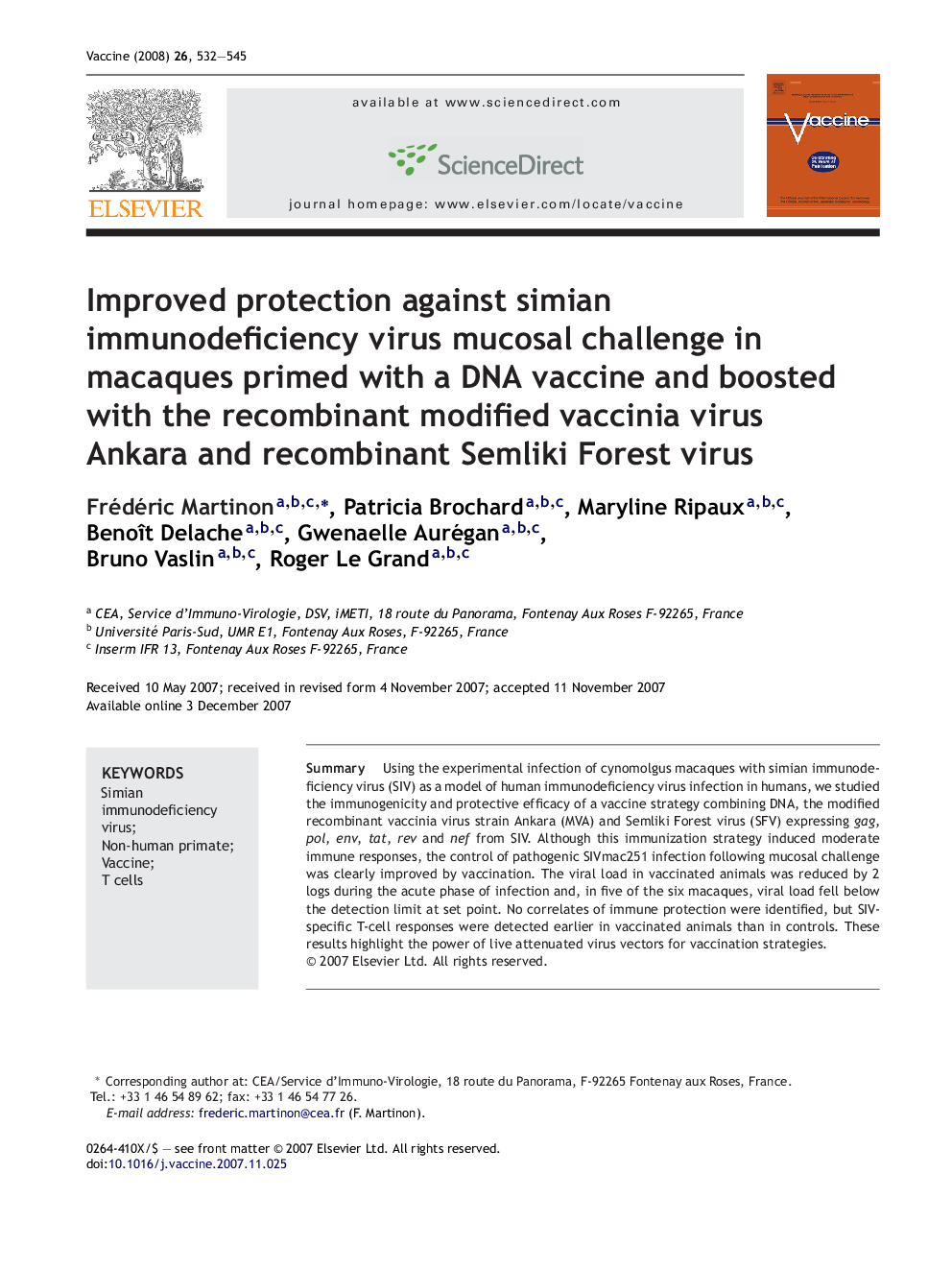| Article ID | Journal | Published Year | Pages | File Type |
|---|---|---|---|---|
| 2407275 | Vaccine | 2008 | 14 Pages |
SummaryUsing the experimental infection of cynomolgus macaques with simian immunodeficiency virus (SIV) as a model of human immunodeficiency virus infection in humans, we studied the immunogenicity and protective efficacy of a vaccine strategy combining DNA, the modified recombinant vaccinia virus strain Ankara (MVA) and Semliki Forest virus (SFV) expressing gag, pol, env, tat, rev and nef from SIV. Although this immunization strategy induced moderate immune responses, the control of pathogenic SIVmac251 infection following mucosal challenge was clearly improved by vaccination. The viral load in vaccinated animals was reduced by 2 logs during the acute phase of infection and, in five of the six macaques, viral load fell below the detection limit at set point. No correlates of immune protection were identified, but SIV-specific T-cell responses were detected earlier in vaccinated animals than in controls. These results highlight the power of live attenuated virus vectors for vaccination strategies.
